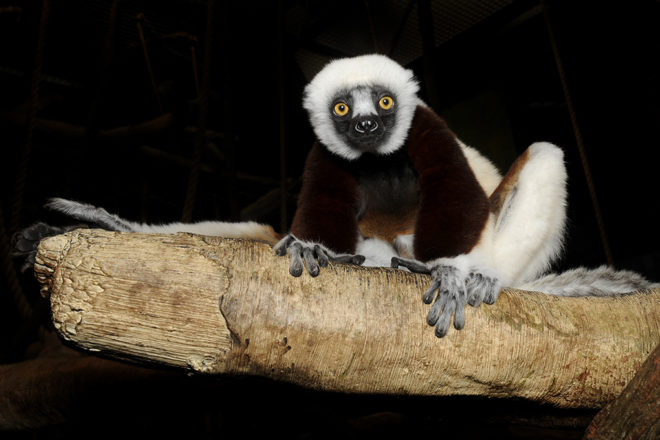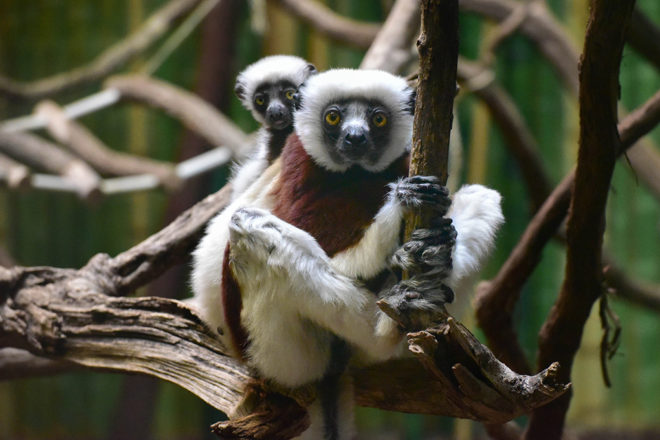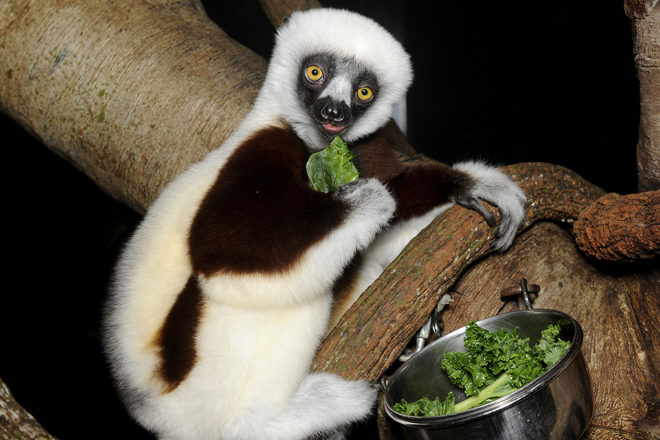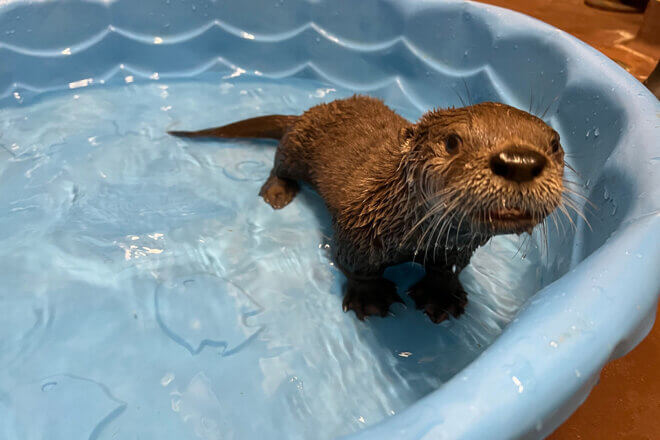
BALTIMORE, MD — The Maryland Zoo in Baltimore is saddened to announce the death of Anastasia, the 17-year-old female Coquerel’s sifaka (CAH-ker-rells she-FAHK) on August 12, 2021.” Female sifaka tend to play dominant roles in their troop and Ana was no exception,” stated Erin Grimm, mammal collection and conservation manager. “Ana ruled the roost, so to speak. She was usually first to eat, selecting her favorite foods and was adept at breaking up family squabbles. She was also gentle, yet fiercely protective of her offspring. Her death is quite a loss for all of us.”
Ana had been under treatment for suspected kidney disease and endocrine gland issues. “As we managed her symptoms, we were searching for a decisive diagnosis,” stated Dr. Ellen Bronson, senior director of animal health, conservation, and research at the Zoo. “Ultimately we concluded that she had a rare disease that has not been reported before in this species, commonly referred to as Addison’s disease. In this disease, the adrenal gland no longer properly excretes hormones, such as adrenaline and cortisol, that are essential to many body functions. She initially responded well to replacement therapy and supportive care, however at her advanced age she was not able to fully recover.”

“Ana came to us in 2009 and was paired with Gratian at the recommendation of the Sifaka Species Survival Plan (SSP) coordinated by the Association of Zoos and Aquariums (AZA),” continued Grimm. “She and Gratian produced 5 offspring at the Zoo, all of which have moved to other AZA accredited facilities. Sifaka are an endangered species and we are honored to participate in this important program helping to conserve these amazing animals.” The Maryland Zoo is one of only thirteen accredited zoos in the U.S. to house Coquerel’s sifaka.
Coquerel’s sifaka (Propithecus coquereli) are lemurs; native only to the island of Madagascar off the southeastern coast of Africa. Sifaka spend most of their lives in the treetops in two protected areas in the sparse dry, deciduous forests on the northwestern side of the island. As with many species of lemur, Coquerel’s sifaka are endangered. Habitat loss due to deforestation is the leading threat to sifaka, as is the case with many species of lemur. Sifaka have a unique brown and white coloration, and are distinguished from other lemurs by the way that they move. They maintain a very upright posture and, using only their back legs, leap through the treetops. They can easily leap more than 20 feet in a single bound. On the ground, they spring sideways off their back feet to cover distance.
“We currently have a male sifaka in Chimpanzee Forest; however he will be moving to another accredited zoo soon to be part of a breeding pair. Once he leaves, we will not have sifaka here at the Zoo for the short term. However, we are very committed to this species and will work with the SSP to bring sifaka back to the Zoo,” concluded Grimm.








Share this article